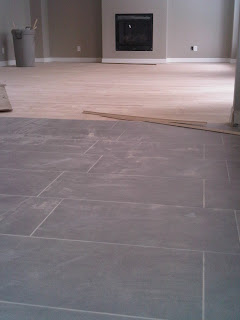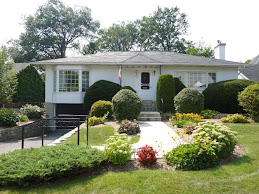Since we are in the midst of an election, and since I live in a riding where there seems to be no shortage of homes being renovated or replaced, I thought it would be timely to repost an article that I wrote last year about the federal GST refund program for new or renovated homes (or lack thereof). It would be nice if this program could be amended to better reflect the cost of homes now.
================================
If you substantially renovate your home or build a new one you may be eligible to receive a rebate of up to 36% of the GST you paid on goods and services to undertake the renovation.
Don't get too excited, however. There are conditions in place that effectively ensure most Ottawa home owners will be unable to claim this rebate.
First of all, you must
substantially renovate your house. That means you must remove or replace at least 90% of the habitable interior. Basically, you would have to be undertaking a complete gut of the house, replacing all of the walls, electrical, plumbing and HVAC to qualify. You do not need to remove or replace foundation, roof or exterior walls to qualify, but if you do, they can count toward the 90%. Unfinished basements do not count as part of the habitable area for the purposes of calculating the percentage substantially renovated. If you basically tear down the existing house and build a new one, then you will also be eligible.
Second, the fair-market value of the house, which includes both the substantially renovated building and the land, must be less than $350,000 to receive a full rebate (i.e. 36% of the GST you paid). It's the fair-market value that is important here, not the cost of construction. If the fair-market value of the house exceeds $450,000 then you are not entitled to any rebate at all. And, if the value lies between $350,000 and $450,000 there is a formula to calculate the proportion of the rebate you are eligible for, which decreases to zero as the fair-market value approaches $450,000.
Unfortunately, the majority of Ottawa residents will never be able to qualify for the full rebate, if indeed they qualify for any rebate at all. You see, by the end of March 2010, the
average price for a residential property in Ottawa (not including condominiums) was $354,698. With some exceptions, such as on the outskirts of Ottawa, it is hard to imagine the fair-market value of any substantially renovated or rebuilt house in Ottawa being less than $350,000.
If you are a condo owner, you might have better luck. The average price of a condominium in Ottawa in March 2010 was $240,409. That gives you some room, particularly if your condo is less than 1000 square feet. With average renovation costs running at about $100 per square foot, you could renovate 900 square feet of a 1000 square foot condo for about $90,000. If the pre-renovation value was $240,000, the completed fair-market value might still be below $350,000, entitling you to a full rebate (note that a full rebate is still only 36% of the GST paid).
Unfortunately, if you are reading this blog post from any other major centre in Canada, except Montreal, you have even less chance of qualifying for a rebate. That's because the
average residential house price is higher in those centres - up to $800,341 in Vancouver, $471,269 in Calgary and $434,696 in Toronto. Residents of these cities have almost no chance of qualifying for any GST rebate.





